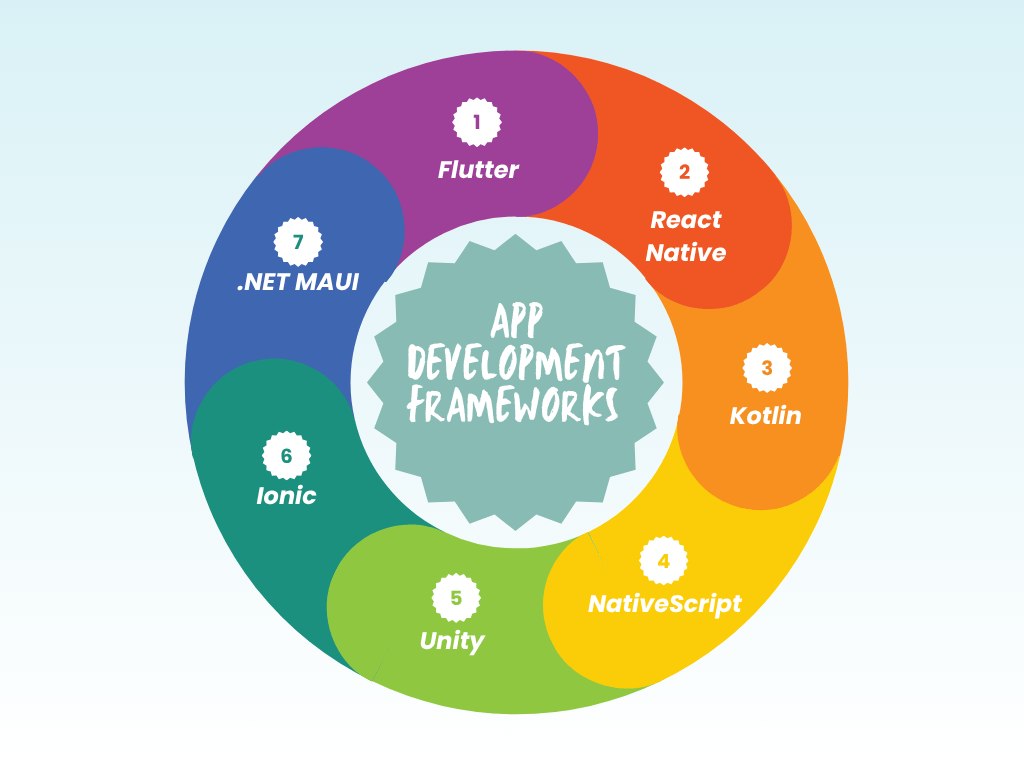Artificial intelligence is streamlining development by automating UI creation, generating code snippets, and detecting bugs early. These enhancements help developers build apps faster, improve code quality, and reduce manual effort across multiple platforms.
Mobile app development is evolving rapidly, with an increased focus on flexibility, fast delivery, and broad platform compatibility. In this landscape, cross platform mobile application development has become essential, allowing developers to build a single codebase that runs smoothly across Android, iOS, web, and desktop devices. This approach maximizes reach while reducing development effort and cost.
In today’s hyper-connected world, mobile apps aren’t just a convenience, they are a necessity. The goal is no longer to build for a single platform but to deliver seamless experiences across multiple devices. That’s why businesses rely on the best cross platform app development frameworks to create scalable, high-performance apps that engage users everywhere.
What to Consider Before Choosing the Best Cross Platform Framework?
Before selecting a tool for cross platform mobile application development, consider these critical factors:
Performance:
Will your app run smoothly and responsively like a native one?
UI Design:
Can the framework help you build an engaging, on-brand user interface?
Team Expertise:
What programming languages and tools does your team already know?
Scalability:
Is the framework capable of supporting your app’s future growth?
Community & Plugins:
Does it have a strong developer community and a rich ecosystem of plugins?
Comparison Table of Mobile App Development Frameworks
With numerous mobile app development frameworks available, selecting the best one can be challenging. It’s important to understand each framework’s strengths and limitations, including performance, UI flexibility, and platform compatibility. The table below provides a snapshot of popular frameworks in 2025, helping you choose the ideal technology for your project.
Framework | Best For | Language | Performance | UI Flexibility |
Flutter | MVPs, rich UIs, startups | Dart | High | Excellent |
React Native | Social apps, business apps | JavaScript | Medium-High | High |
Kotlin | Android-centric teams, shared logic | Kotlin | High | Native-level |
NativeScript | Performance-heavy apps | JS/TypeScript | High | Native-level |
Unity | Games, AR/VR | C# | High | 2D/3D-Centric |
Ionic | Web-based UI | HTML, CSS, JS | Prototypes, PWAs | Medium |
.NET MAUI | Enterprise apps, Microsoft stack | C# | High | Good |
Top Cross Platform Mobile App Development Frameworks in 2025

i) Flutter
Flutter, Google’s UI toolkit, is a standout in cross platform mobile application development thanks to its ability to deliver highly performant apps with rich, consistent UIs from a single Dart codebase. It supports Android, iOS, web, and desktop platforms, making it an excellent choice for startups and MVPs.
ii) React Native
Maintained by Meta, React Native uses JavaScript and React to create versatile business and social apps. Its fast development cycle and large ecosystem make it one of the best cross platform app development frameworks for teams familiar with web technologies.
iii) Kotlin Multi-platform
Ideal for Android-centric teams, Kotlin Multiplatform enables sharing business logic across platforms while maintaining native UI components, perfect for apps requiring close integration with backend services.
iv) .NET MAUI
.NET MAUI is Microsoft’s evolution of Xamarin. Forms, designed for enterprise-grade apps with C# and .NET. It excels in delivering consistent experiences across Android, iOS, Windows, and macOS.
v) Ionic
Built on web technologies, Ionic is great for rapid MVP development and Progressive Web Apps (PWAs). It allows web developers to leverage familiar tools while creating mobile-friendly apps.
vi) Native-Script
Native-Script lets developers build truly native mobile apps using Java-Script or Type-Script, with direct access to native APIs, offering excellent performance for complex applications.
vii) Unity
Best known for game and AR/VR development, Unity offers powerful 2D/3D rendering capabilities and cross-platform deployment for immersive experiences beyond traditional apps.
Conclusion
Choosing the best cross platform app development framework depends on your project’s purpose and priorities:
- Use Flutter for pixel-perfect UI and rapid development.
- Choose React Native for versatile business apps with strong web/mobile synergy.
- Opt for Kotlin Multiplatform or .NET MAUI for enterprise solutions or backend logic reuse.
- Select Ionic for web-first apps and fast MVPs.
- Go with Unity for immersive 2D/3D or AR/VR applications.
By carefully evaluating your needs against these leading mobile app development frameworks, you can ensure your app delivers great user experiences across all platforms, reducing app development costs and time-to-market.

Partner with Experts
Frequently Asked Questions
How is AI enhancing cross platform development in 2025?






What are the main limitations of cross platform app development?










- Slower access to platform-specific updates
- Larger app sizes
- Minor performance compromises
- Reliance on third-party plugins for native features
How is cross platform development different from native app development?










Cross platform development uses a single codebase for iOS and Android, while native development requires separate code for each platform. It's more time and cost-efficient, but it may limit access to some device-specific features.
Is Flutter better than React Native for cross platform apps?










Flutter delivers better UI flexibility and strong performance using its rendering engine. React Native offers easier integration with native components and suits teams using JavaScript.


